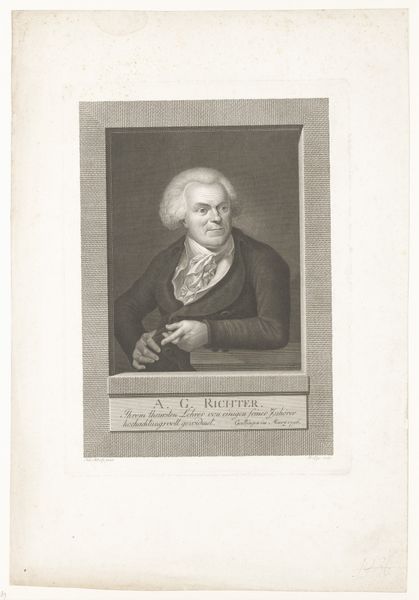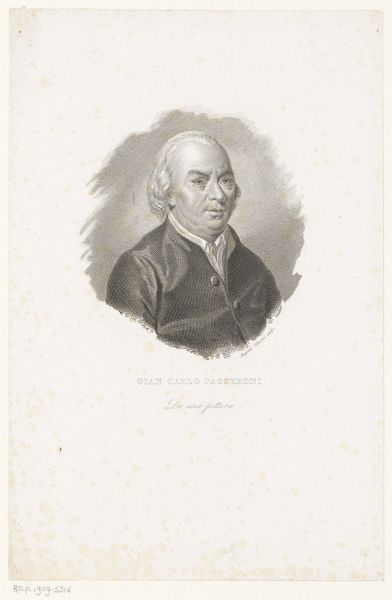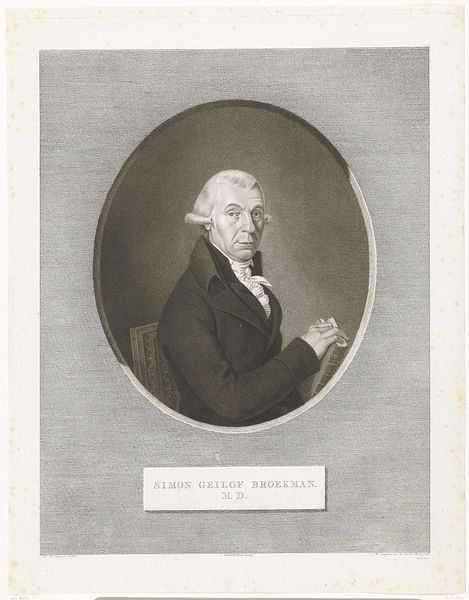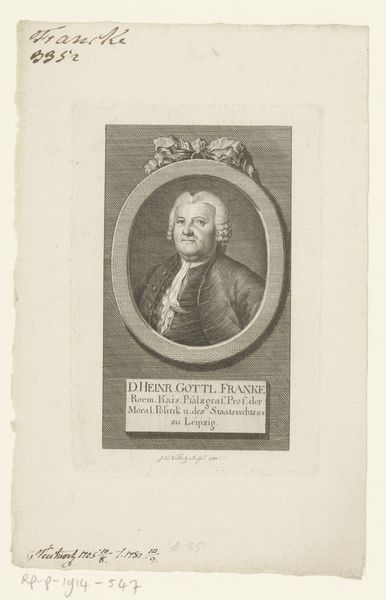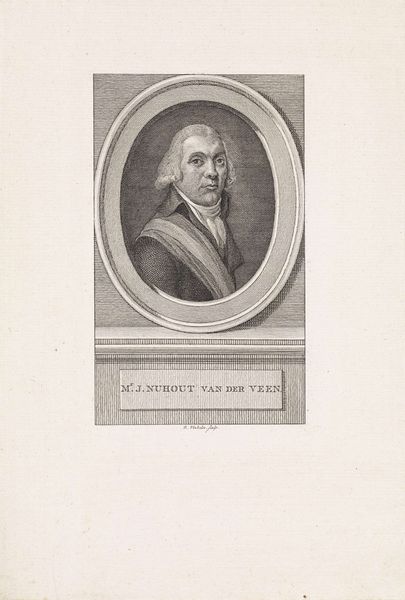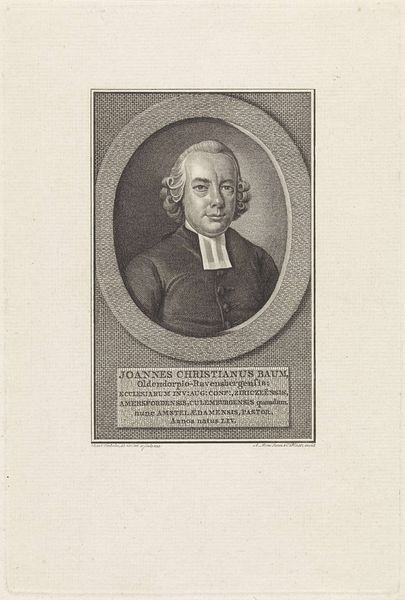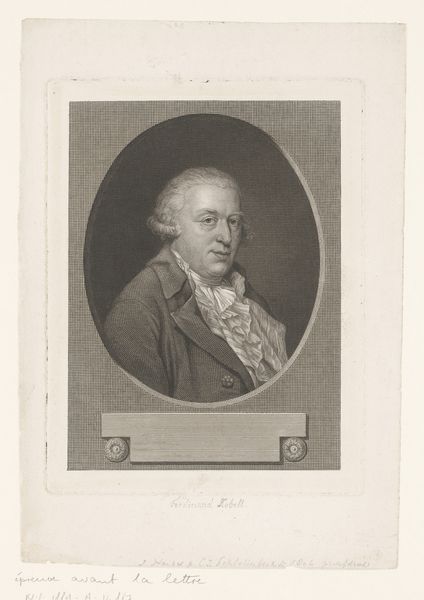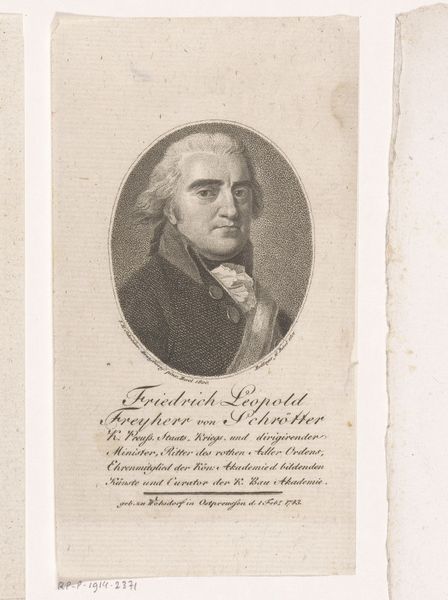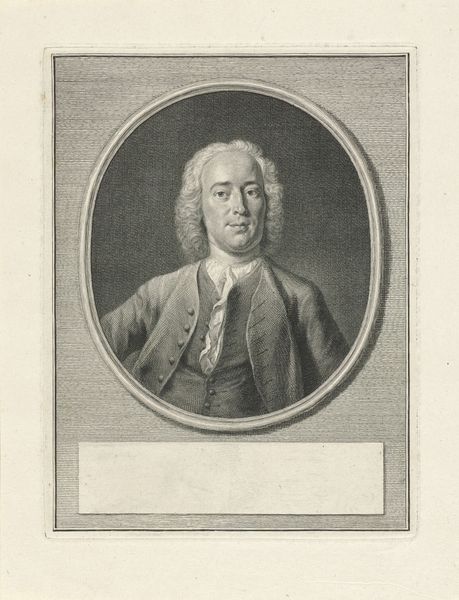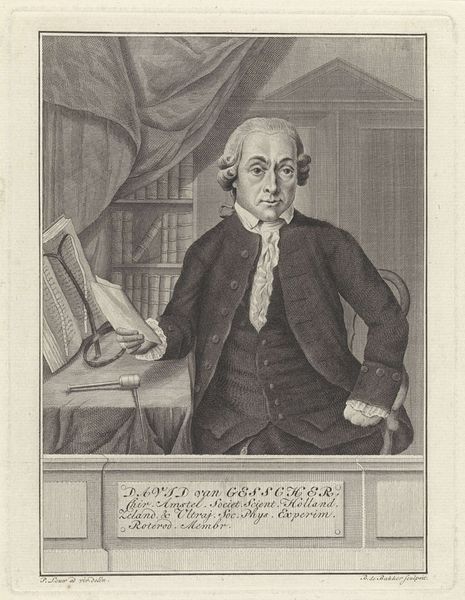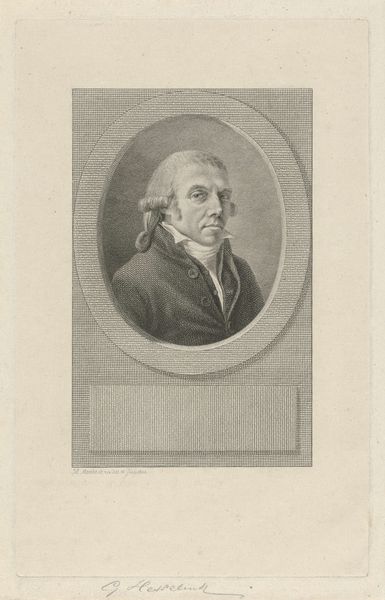
engraving
#
portrait
#
neoclacissism
#
old engraving style
#
archive photography
#
historical photography
#
line
#
history-painting
#
academic-art
#
engraving
#
realism
Dimensions: height 277 mm, width 227 mm
Copyright: Rijks Museum: Open Domain
Curator: Take a moment to observe this engraving, “Portret van Krishnaraja Wadiyar III," completed in 1807 by Charles Picart. Editor: Immediately striking! The man's caught in action, quill in hand, seems absorbed in thought, all rendered with very fine detail. What’s the context of the piece? Curator: It reflects the Neoclassical style’s influence in portraiture, emphasizing idealized representation and clarity, a deliberate effort to evoke the past through aesthetic and compositional values, but the interesting component here is the way it presents power. Commissioned works like this, specifically engravings, would have circulated within specific social strata and political administrations, both in Europe and colonial India. Editor: Speaking of circulation, as a print, the focus shifts to the accessibility and multiplication of images. How was the image created, by the way? Curator: Yes, the reproduction allows wider dissemination, but let’s consider its primary circulation network— a specific political or intellectual public in the early 19th century. As an engraving, Picart would have painstakingly etched the image onto a metal plate, allowing for numerous impressions. This medium choice democratized images somewhat but within specific societal spheres. Editor: Definitely; each line bears the mark of labor. So the means of production affect how we understand this portrait; even as an image of supposed regality? Curator: Absolutely. It underscores how Krishnaraja Wadiyar III wanted to present himself and his kingdom. Consider how access to his likeness might shape his authority both domestically and among the British colonials. It represents a kind of cultural exchange, or more accurately, negotiation of power. Editor: That’s fascinating. Seeing the ruler, pen in hand, writing – there’s this attempt to merge authority with a cultivated mind… to legitimize rule through both image and the suggestion of scholarly work. Curator: Precisely. By placing the subject in a posture of intellectual pursuit, it elevates him. Editor: So, ultimately we have an intricate dance between the power to commission, the labor of making the art, and the social performance of rule itself! Curator: Indeed, this artwork reveals much about the interwoven threads of politics, artistic expression, and the construction of historical narrative. Thank you for these material observations.
Comments
No comments
Be the first to comment and join the conversation on the ultimate creative platform.
